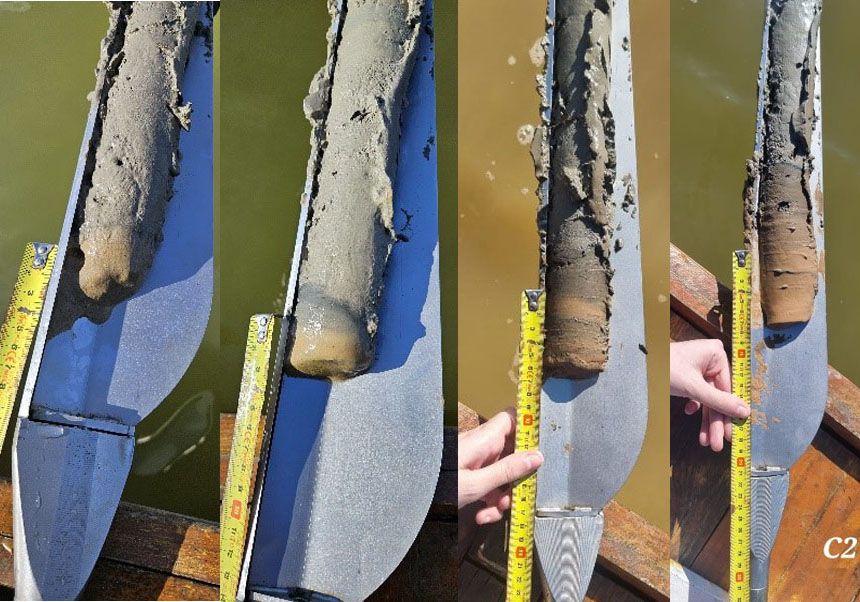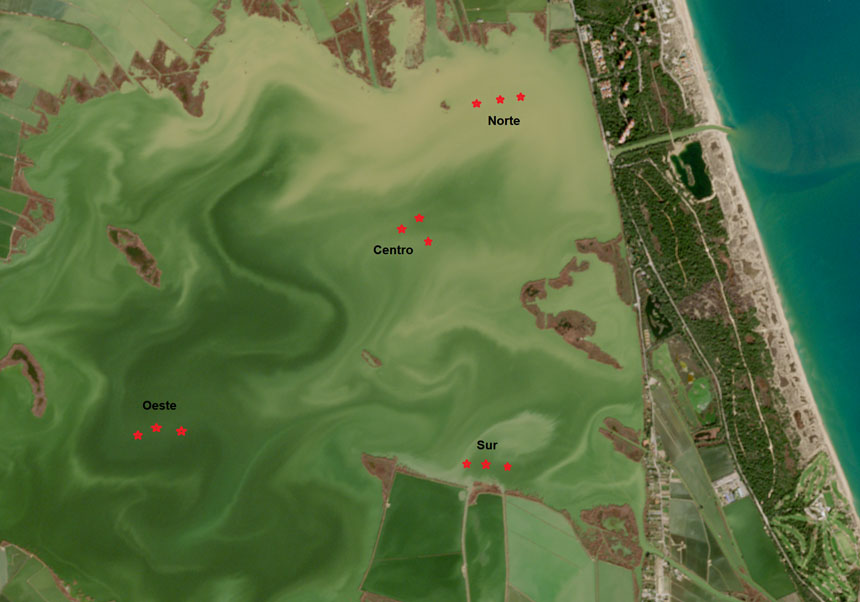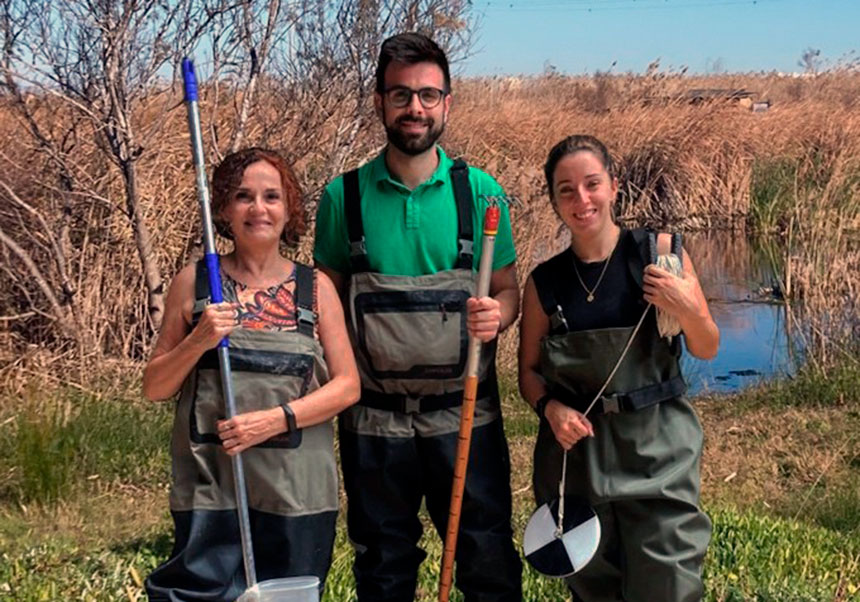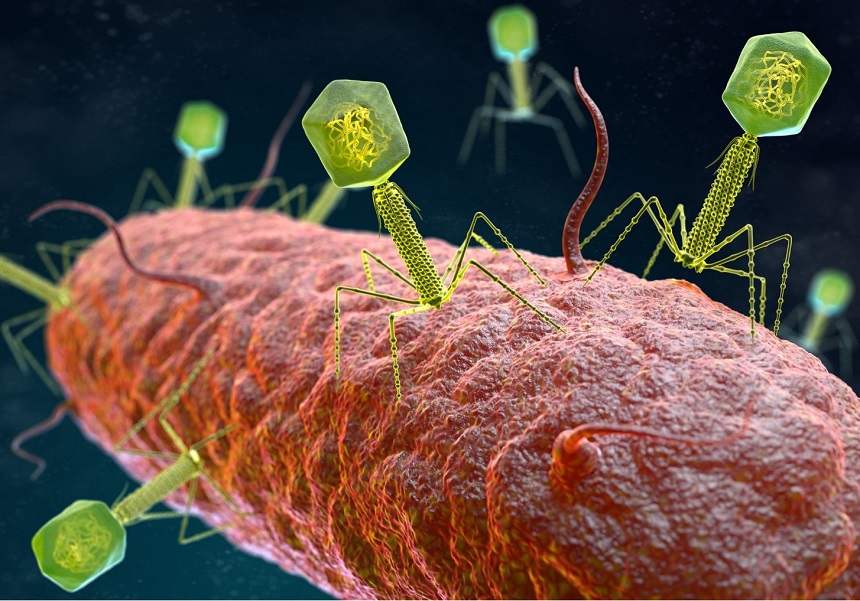The DANA caused in one day the usual sedimentation volume of 30 years in the Albufera
- Scientific Culture and Innovation Unit
- February 14th, 2025

Researchers from the Limnology group at the Cavanilles Institute of Biodiversity and Evolutionary Biology of the University of Valencia have extracted sediments from different parts of the Albufera of Valencia for chemical analysis. They have confirmed that the approximately six centimetres added following the storm system known as a DANA on 29 October are equivalent to thirty years of sedimentation at the lake’s usual sedimentation rate.
“This data highlights the immense scale of the flooding that occurred as a result of the DANA in October 2024”, explains Juan Soria, associate professor of Ecology at the UV, who leads the team alongside researchers Juan Víctor Molner and Noelia Campillo. Regarding other floods, Soria explains that in the Mar Menor (Murcia) in 2016, the accumulated thickness was two centimetres in affected areas near the outlets of ravines, as is the case of the Rambla del Poio in the Albufera. He also cites the example of the Besòs River, where sediment deposition during a flood ranges between 0.5 and 2 millimetres, which provides a sense of the scale of the flooding on 29 October.
According to Juan Soria, “based on the lake’s surface area (23 km²) and an average sedimentation of three centimetres, the volume of sediment accumulated due to the DANA is estimated at 690,000 cubic metres — around 700,000 tonnes — the equivalent of approximately 46,000 lorries of debris. The suspended matter was deposited over the four days in which floodwaters reached the Albufera, with some settling in the rice fields and the rest accumulating in the lake itself, where this process occurred over a single day”.
The purpose of this sediment extraction in the Albufera is to determine the quantity and composition of the material dragged and deposited in the lagoon as a result of the DANA. Using a sediment extractor, which allows for an undisturbed sediment profile, samples have been collected at four different locations, with three replicas at each site, making a total of twelve samples taken from the north, centre, west, and south of the Albufera.
“The extracted samples indicate that the deposited materials have a more reddish clay-like colour in the north and centre, with a thickness of around six centimetres, while in the west and south, they are more cream-coloured, with a thickness of approximately 2-3 centimetres”, explains Juan Soria.
These samples will soon be analysed for their composition to determine how they differ from the sediment layer below, which predates the flood. The study will also assess the predominant chemical components and their potential impact on the underlying and existing flora and fauna within the park. It is worth noting that the flooding caused by the Rambla del Poio devastated much of the northern part of the l’Horta Sud region. The floodwaters carried a mix of natural and artificial compounds and elements, which ultimately settled in the Albufera, where the aforementioned ravine discharges.
Annex caption:
Map showing the locations in the Albufera where the twelve samples were collected for analysis.
Categories: Investigació a la UV , Internacionalització recerca , Institut Cavanilles de Biodiversitat i Biologia Evolutiva , Facultat de Ciències Biològiques , Difusió i comunicació científica , Producció científica , Recerca, innovació i transferència



















